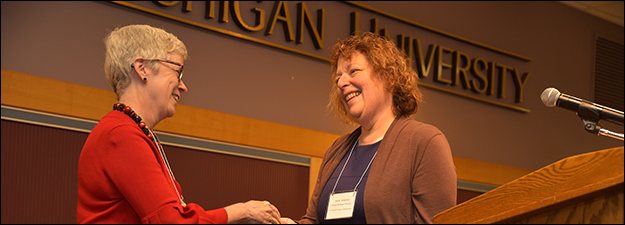Archaeology of Medieval Europe II: Bioarchaeological Research on Eastern Europe
Sponsoring Organization(s)
Center for Medieval and Early Modern Studies, Univ. of Florida
Organizer Name
Florin Curta
Organizer Affiliation
Univ. of Florida
Presider Name
Cristina Tica
Presider Affiliation
Univ. of Nevada-Las Vegas
Paper Title 1
Health, Diet, and Lifestyles of Early Medieval Populations in the Eastern Adriatic Region (Sixth-Twelfth Centuries)
Presenter 1 Name
Mario Novak (Congress Travel Award Winner)
Presenter 1 Affiliation
Institute for Anthropological Research, Zagreb
Paper Title 2
Urbanization and the Bioarchaeology of Neoplastic Disease: Examining Social Processes and Disease in the Past, in Reference to Medieval Poland
Presenter 2 Name
Thomas Siek (Karrer Travel Award Winner)
Presenter 2 Affiliation
Univ. College London
Paper Title 3
Life and Death in the Tenth to Thirteenth Century: Comparative Paleodemographic Analysis of Skeletal Populations Excavated in the Eastern Part of the Great Hungarian Plain
Presenter 3 Name
István János
Presenter 3 Affiliation
Nyíregyházi Egyetem
Paper Title 4
New Lines of Evidence: Using Human Skeletal Remains to Understand Late Medieval History and Population Dynamics in Eastern Europe
Presenter 4 Name
Kathryn Grow Allen
Presenter 4 Affiliation
Univ. at Buffalo
Start Date
11-5-2017 1:30 PM
Session Location
Schneider 1335
Description
Skeletal remains excavated from archaeological sites have the potential to give us the rare opportunity to gain direct insight into the lives of past people. Human remains are one of the few direct testimonies which provide information on demography, health status, habitual use of the body in labor, accrued trauma and injury, and other factors affecting resilience and adaptability under different political regimes. Bioarchaeology integrates biological data from the analysis of the bones and teeth with the archaeological and the mortuary context, the cultural and environmental reconstructions, and with the historic information; therefore, it is inherently interdisciplinary and it seeks to frame research questions in a way that link the past to the present. Bioarchaeology addresses complex questions and requires using and synthesizing information from many different areas; it coordinates a large body of information and utilizes multiple lines of evidence in interpretations. Contextualized skeletal data have the incredible potential to give a full picture of what was going on during the Middle Ages in Eastern Europe. The session is designed to offer a glimpse into the broad, cross-cultural, historically situated study of human behavior of populations living in Eastern Europe during the Middle Ages--the inhabitants of late antique and early medieval settlement in Dalmatia; people buried in church graveyards in Arpadian-age, eastern Hungary, and in Piast Poland; Szeklers in 12th- to 18th-century Transylvania.
Florin Curta
Archaeology of Medieval Europe II: Bioarchaeological Research on Eastern Europe
Schneider 1335
Skeletal remains excavated from archaeological sites have the potential to give us the rare opportunity to gain direct insight into the lives of past people. Human remains are one of the few direct testimonies which provide information on demography, health status, habitual use of the body in labor, accrued trauma and injury, and other factors affecting resilience and adaptability under different political regimes. Bioarchaeology integrates biological data from the analysis of the bones and teeth with the archaeological and the mortuary context, the cultural and environmental reconstructions, and with the historic information; therefore, it is inherently interdisciplinary and it seeks to frame research questions in a way that link the past to the present. Bioarchaeology addresses complex questions and requires using and synthesizing information from many different areas; it coordinates a large body of information and utilizes multiple lines of evidence in interpretations. Contextualized skeletal data have the incredible potential to give a full picture of what was going on during the Middle Ages in Eastern Europe. The session is designed to offer a glimpse into the broad, cross-cultural, historically situated study of human behavior of populations living in Eastern Europe during the Middle Ages--the inhabitants of late antique and early medieval settlement in Dalmatia; people buried in church graveyards in Arpadian-age, eastern Hungary, and in Piast Poland; Szeklers in 12th- to 18th-century Transylvania.
Florin Curta


